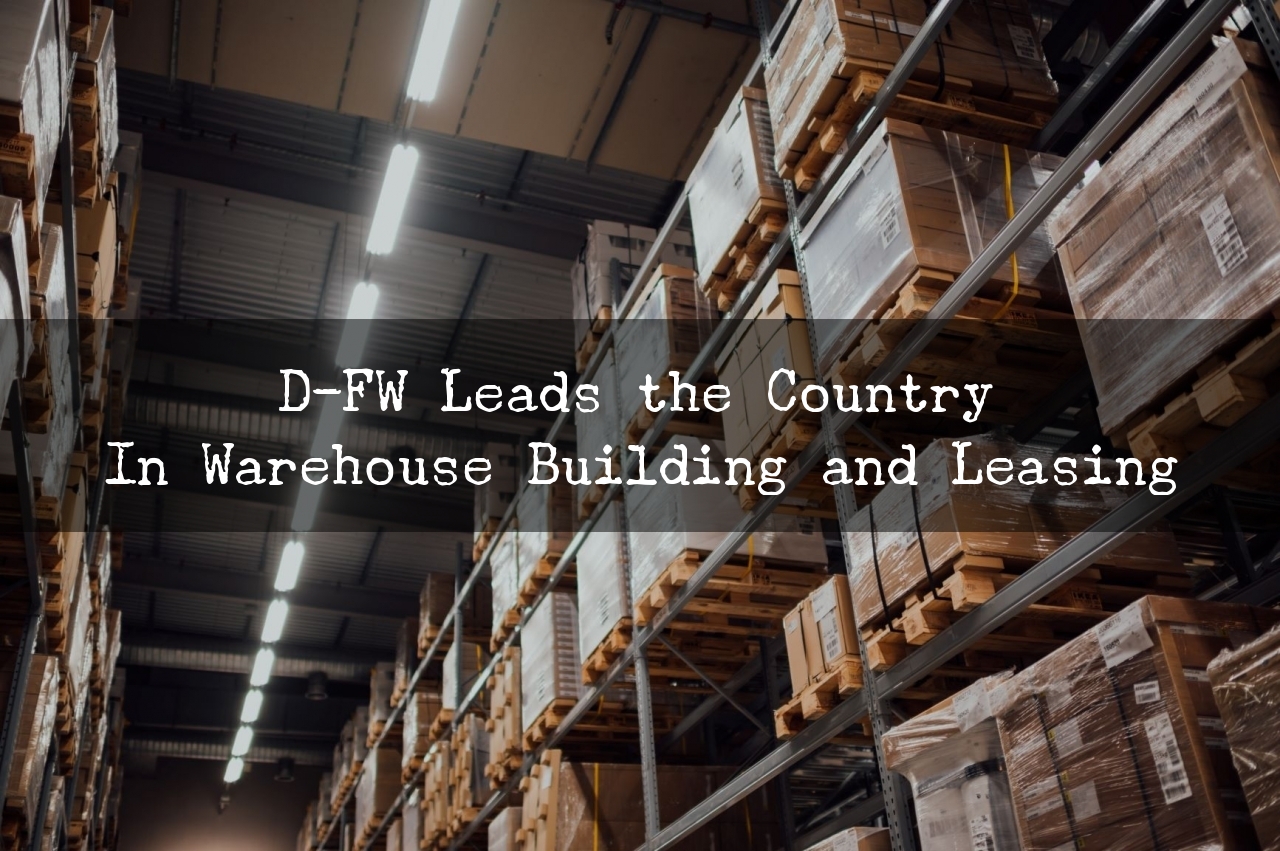D-FW Leads the Country in Warehouse Building and Leasing
Given all the construction it shouldn’t be a surprise, but Dallas-Fort Worth is the top market in the country for both warehouse construction and leasing. With the pandemic fueling consumer demand for products and services, industrial development has boomed this year in North Texas while many other real estate sectors have floundered.
So far this year, net warehouse space leasing in D-FW has surpassed 21 million square feet, according to new reports from commercial property firm Cushman & Wakefield. That’s well ahead of the other leading U.S. industrial markets in Pennsylvania and Southern California.
North Texas has also delivered more new industrial space than any other U.S. metro area — almost 23 million square feet through the first nine months of 2020.
“These positive numbers are another sign of industrial resiliency and show that there is still demand for space in the industrial market, even in uncertain times,” Tray Anderson, Cushman & Wakefield’s head of industrial and logistics, said in the new report. “With the continued backing and strength of e-commerce, the market managed to accelerate through the first three quarters of 2020 without missing a step.”
Nationwide businesses have gobbled up more than 150 million square feet of warehouse and distribution space through the third quarter.
And more than 250 million square feet of additional industrial buildings have opened their doors around the country this year.
“While we’ve heard concerns about potential over-building of industrial space, our research shows that 62% of new construction is speculative, demonstrating that the space being built is more controlled and that developers are acting on the conservative side,” said Carolyn Salzer, Americas head of logistics and industrial research. “Overall, industrial markets are performing very well and we expect continued strength as retailers, grocery, life sciences continue to require industrial space — particularly distribution and warehouse — to facilitate the growth of their e-commerce efforts and response to the ongoing pandemic...”

